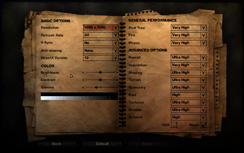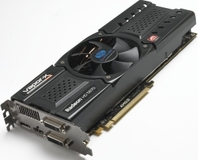Sapphire Radeon HD 4890 Vapor-X 2GB review
August 25, 2009 | 11:16

Far Cry 2
Publisher: UbisoftFar Cry 2 is a first person shooter from Ubisoft and was one of the most hotly-anticipated games of 2008. While it continues the Far Cry franchise that Crytek started in 2004, Far Cry 2 is built on its own in-house engine and has no association to anything Crytek has worked on or is working on now.
The game uses DirectX 10.1 to improve anti-aliasing performance and quality. The improvements are made by reading the multisampled depth buffer in a single pass - something that was only introduced officially with DirectX 10.1. However, Ubisoft has also made the enhancements available to Nvidia hardware as well through a DirectX 10 extension.
We used the game's built-in benchmarking tool to measure performance in DirectX 10/10.1 mode - this provided a pretty accurate rundown of how various graphics cards perform and it shows off a lot of the game's special effects. We set every option to its maximum setting and tested at 1,680 x 1,050, 1,920 x 1,200 and 2,560 x 1,600 with various anti-aliasing settings.
Anisotropic filtering is controlled by the game's quality settings and forcing AF from the driver control panel does not have any effect on visual quality or performance.
The Sapphire copes very well with Far Cry 2 in DX10.1 mode, outpacing Nvidia's GeForce GTX 275 at every resolution we tested at. It coped better than a GeForce GTX 285 at 2,560 x 1,600, where the extra video memory gave the card room for all textures and the hefty frame buffer.

MSI MPG Velox 100R Chassis Review
October 14 2021 | 15:04









Want to comment? Please log in.